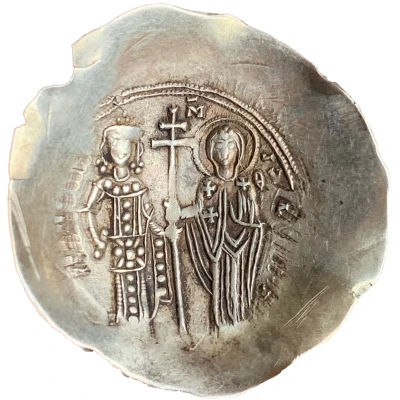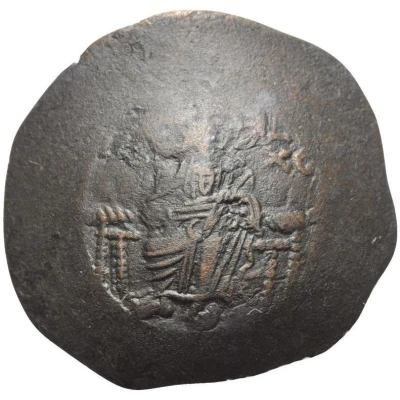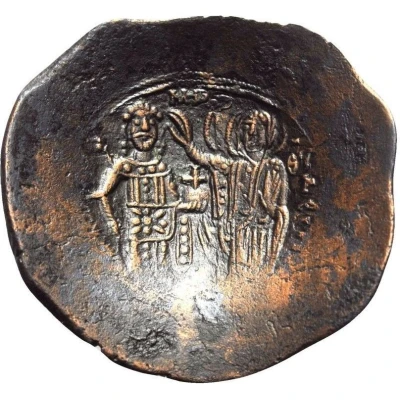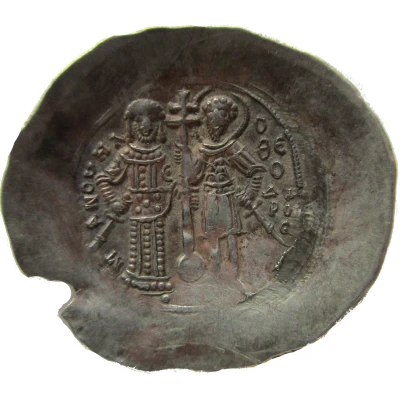


© Duncan Wylie Wilson
Aspron Trachy - Manuel I second coinage ND
| Electrum | 4.0 g | 31 mm |
| Issuer | Byzantine Empire (Byzantine states) |
|---|---|
| Emperor | Manuel I Komnenos Porphyrogennetos (1143-1180) |
| Type | Standard circulation coin |
| Years | 1152-1167 |
| Value | Aspron Trachy (1⁄120) |
| Currency | First Hyperpyron Nomisma (1092-cca. 1300) |
| Composition | Electrum |
| Weight | 4.0 g |
| Diameter | 31 mm |
| Shape | Concave |
| Technique | Hammered (scyphate) |
| Orientation | Variable alignment ↺ |
| Demonetized | Yes |
| Updated | 2024-10-04 |
| Numista | N#296057 |
|---|---|
| Rarity index | 94% |
Reverse
On left, the emperor standing facing, bearded, wearing stemma, divitision, collar-piece and jeweled loros, holding akakia with right hand; on right, Virgin standing facing, nimbate, wearing tunic and maphorion, M above her head, ΘV next to her left shoulder; both jointly holding between them a patriarchal cross on long shaft set on globe.
Script: Greek
Lettering:
MANWHL DECPOTH
M ΘV
Unabridged legend:
Μανουήλ Δεσπότης
Mητηρ Θεου
Translation:
The despot Manuel
Mother of God
Interesting fact
One interesting fact about the Aspron Trachy - Manuel I (second coinage) ND (1152-1167) coin from the Byzantine Empire is that it features a unique blend of Christian and ancient Greek elements on its design. The obverse side of the coin depicts a bust of Jesus Christ, while the reverse side features an image of the Byzantine emperor Manuel I, along with an inscription in Greek that translates to "Manuel, the Christ-loving king." This blending of religious and imperial imagery reflects the complex cultural and political landscape of the Byzantine Empire during this time period.



